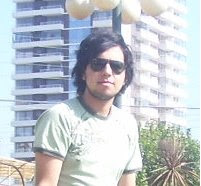The indefinite articles a and an.
This rule is not difficult. look at this:

A + Words beggining with a consonant does not change! _A boy!
A + Words beggining with a vowel does change by adding a "N at the end._An apple.
"A boy eating an apple.
Examples:
An elepanth, an animal, an actor, an apricot, etc.
A fireman, a ghost, a criminal, a table, a boy, a girl, a dog, a cat, a ball.
Definite article: THE.
This is definite because it refers to a particular member of a group.
The is not used with noncountable nouns referring to something in a general sense:
[no article] Coffee is a bitter drink.The is used with noncountable nouns that are made more specific by a limiting modifying phrase or clause:
[no article] Spanish cames from Spain.
[no article] Intelligence is difficult to quantify.
The coffee in my cup is too hot to drink. (Coffee made more specific)The is also used when a noun refers to something unique: the White House
The Japanese he speaks is often heard in the countryside.
The intelligence of animals is variable but undeniable.
the theory of relativity
the 1999 federal budget
Do not use THE in these cases.
- names of countries (Chile, Mexico, Bolivia) except the Netherlands and the US
- names of cities, towns, or states (Viña del mar, Caracas, Miami)
- names of streets (Washington Blvd., Vicuña Mackenna.)
- names of lakes and bays (Lake Titicaca, Lake Villarrica) except with a group of lakes like the Great Lakes
- names of mountains (Mount Everest, Mount Chaitén) except with ranges of mountains like the Andes or the Rockies or unusual names like the Matterhorn
- names of continents (Asia, America)
- names of islands (Easter Island, Maui, Key West) except with island chains like the Aleutians, the Hebrides, or the Canary Islands
- names of rivers, oceans and seas (the Nile, the Pacific)
- points on the globe (the Equator, the North Pole)
- geographical areas (the Middle East, the West)
- deserts, forests, gulfs, and peninsulas (the Sahara, the Persian Gulf, the Black Forest, the Iberian Peninsula)







